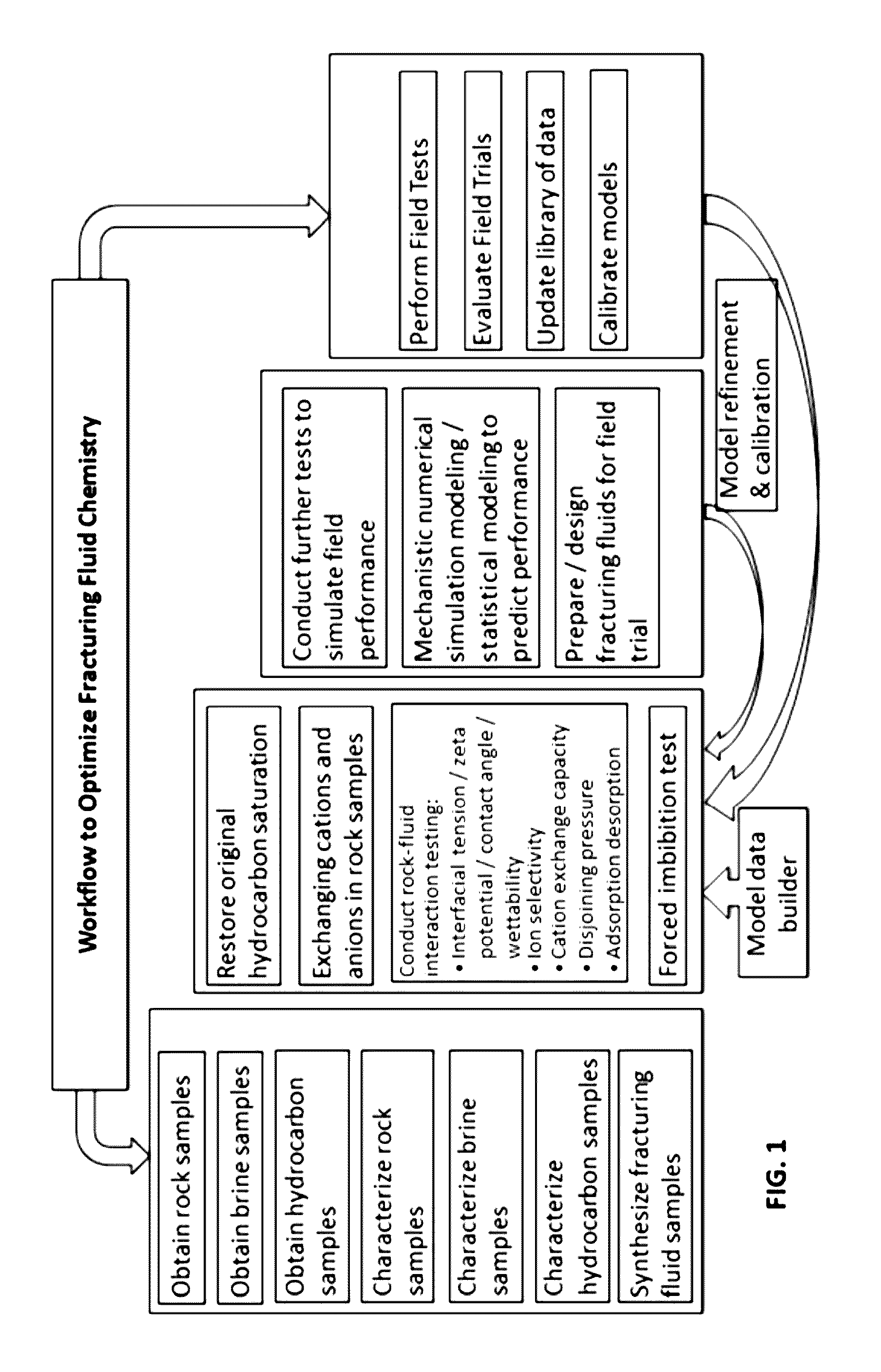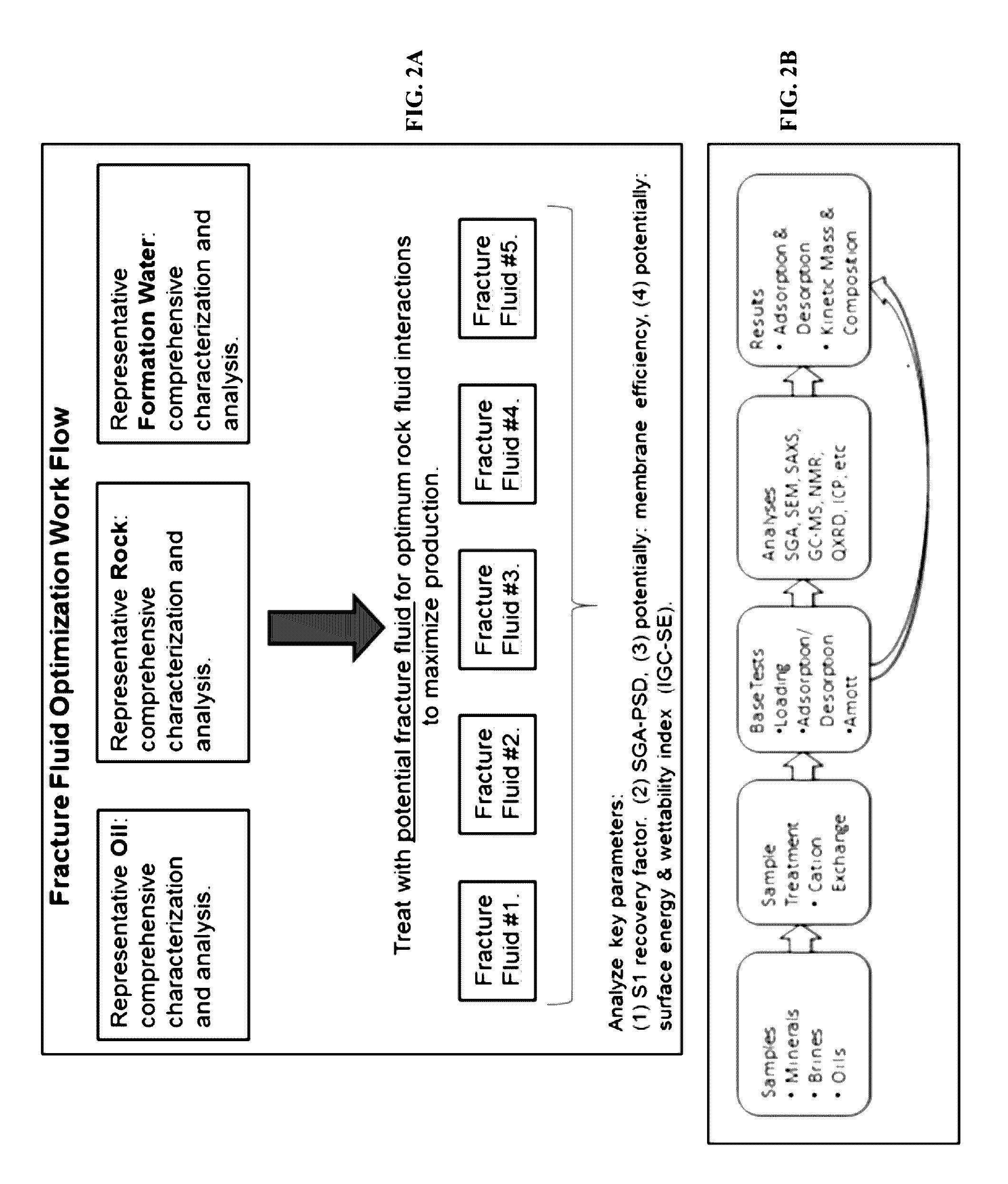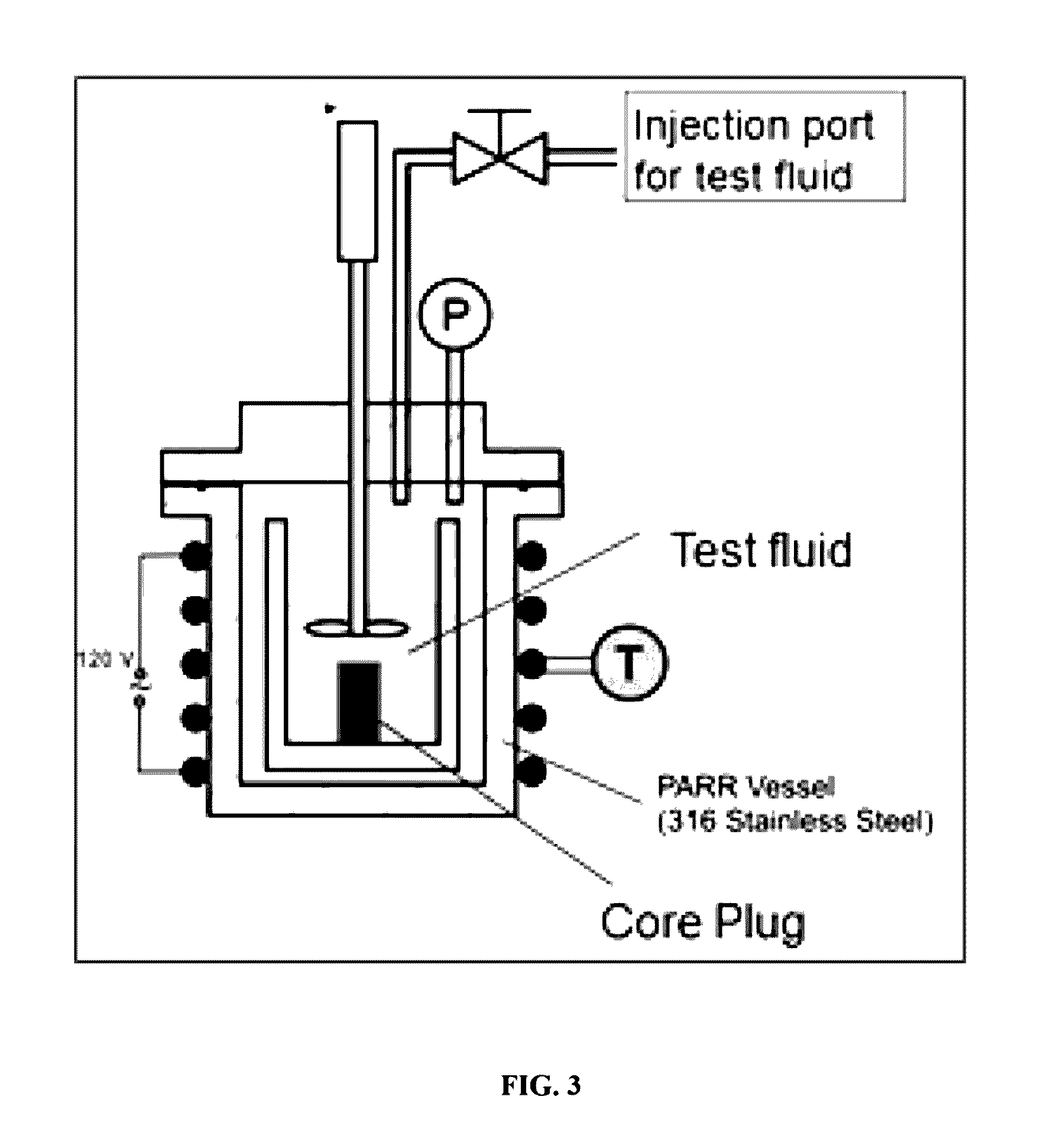Processes and Systems for Characterizing and Optimizing Fracturing Fluids
- Summary
- Abstract
- Description
- Claims
- Application Information
AI Technical Summary
Benefits of technology
Problems solved by technology
Method used
Image
Examples
example 1
[0124]In this screening experiment, a number of wettability tests with various fracturing fluids are carried out with a plurality of rock samples. Contact angle and / or surface tension (IFT) measurements are conducted with a Kruss DS100 apparatus, equipped with software to capture contact angle and IFT data. The contact angle can be measured using the Young Laplace method. The IFT measurement can be measured using Pendant drop techniques. Measurement data is collected for the library, correlating wettability characteristics of the fracturing fluid samples with the rock samples. A number of fracturing fluid candidates can be selected for further experiments, CEC and / or the adsorption / test.
example 2
[0125]Based on the screen test results in Example 1, e.g., wettability tests with fracturing fluids giving the best responses for rock samples, a few fracturing fluid candidates are selected for the adsorption / desorption test. Each rock sample, e.g., a core disk, is first saturated with a select hydrocarbon sample for 24 hours. The sample is then centrifuged for a few minutes and decanted. The rock sample is then saturated with a selected fracturing fluid at reservoir temperature. The release of oil film from the rock surface can be observed and recorded. Oil production by water imbibition can also be monitored and recorded. The produced oil can be qualitatively estimated at the end of the test.
example 3
[0126]After the adsorption / desorption test, the rock samples in Example 2 are tested to measure the contact angle and spreading potential to confirm and / or select the fracturing fluids giving a combination of desirable oil production as well as wettability characteristics.
PUM
 Login to View More
Login to View More Abstract
Description
Claims
Application Information
 Login to View More
Login to View More - R&D
- Intellectual Property
- Life Sciences
- Materials
- Tech Scout
- Unparalleled Data Quality
- Higher Quality Content
- 60% Fewer Hallucinations
Browse by: Latest US Patents, China's latest patents, Technical Efficacy Thesaurus, Application Domain, Technology Topic, Popular Technical Reports.
© 2025 PatSnap. All rights reserved.Legal|Privacy policy|Modern Slavery Act Transparency Statement|Sitemap|About US| Contact US: help@patsnap.com



